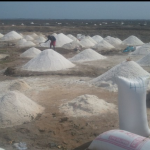THE TEN (10) POINT PILLARS OF GOVERNMENT’S INDUSTRIAL TRANSFORMATIONAL AGENDA

1. Industrial revitalization Programme
(Provision of stimulus package to economically viable but financially distressed companies)
2. One District One Factory (Decentralizing industrial development)
The policy is geared towards decentralizing industrial development. The initiative is designed to decentralize industrial development to ensure an even and spatial spread of industries. The state will facilitate and assist medium to large scale business to set up. The state will only have an equity interest.
3. Development of Strategic Anchor Industries (towards diversifying the economy)
It is expected to give rise to the emergence of strong and robust petrochemical and integrated aluminum industries, vehicle assembling plants, pharmaceuticals, palm oil as well as industrial salt architecture.
4. Establishment of Industrial Parks in all regions.
The Ministry of Trade and Industry will facilitate the acquisition of land for the springing up of these industrial parks nationwide. These parks will be Free Zone enclaves with access to reliable energy supply
5. Development of small and medium-scale enterprises (SMEs)
If the Government’s objective of job creation will permeate all facets of the economy, small and medium scale enterprises would have to be given the needed boost to survive.
6. Export Development Programme.
The Ministry will encourage and facilitate for businesses to take advantage of AGOA and the EPA. This is particularly necessary because should the factories under the One District One Factory take on Free Zones status, they would be required under the law to export about 70% of their production.
7. Enhancing Domestic Retail Infrastructure.
This will be done through value addition to locally manufactured products to make them competitive with other products from elsewhere. Again flagship interventions such as the One District One Factory and the industrial revitalisation Programme will lead to large volumes of production and there is the need to get the needed retail infrastructure in place to cope with it.
8. Improving the Business Environment through regulatory reforms
This involves putting in place measures to ease the cost of doing business in the country through removing some of the bureaucracies associated with doing business in the country. This will help position the country as business friendly environment and consequently impact on the country’s ratings on the World Bank’s ease of doing index.
9. Industrial sub-contracting exchange;
This is intended to link SMEs to large companies in the country to ensure that the large companies subcontract some of their businesses to the SMEs
10. Improving Public-Private sector Dialogue.
It is expected that at least there will be one Business Summit every year to review implementation of various initiatives to take stock of the strides made and steps being taken to address identified implementation challenges.











